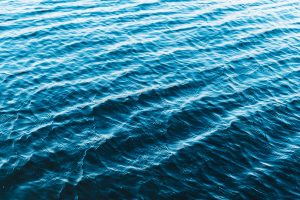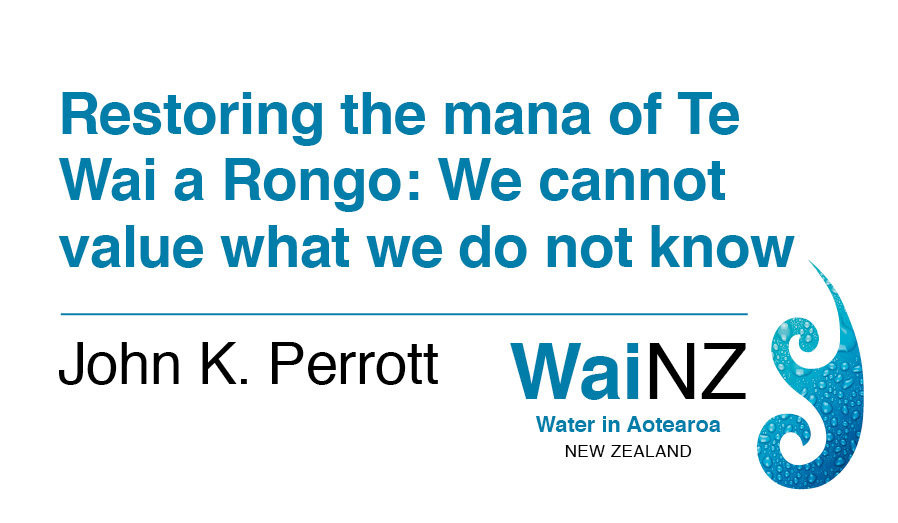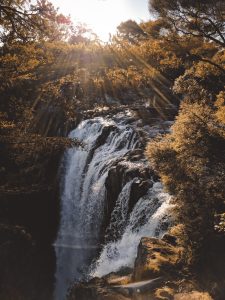My kaupapa focuses on Māori perceptions associated with the environment, especially freshwater. I wish to impress upon you why the preservation of freshwater is a property rights issue, guaranteed by the Te Tiriti o Waitangi¹, and not an issue of race or ownership. Consequently, I argue that tino rangatiratanga as guaranteed to Māori, and ownership are not the same thing.
It is ironic that New Zealand was sold to English settlers by their peers and settled on the promise of quality soil and clean water. This is because since the signing of the Te Tiriti o Waitangi there has been unprecedented ecological destruction wrought by our mismanagement of water and land in the name of progress.
Protecting our waterways helps to keep Māori culture alive
Māori concerns around land and water policy have always been about affirming tribal proprietary rights guaranteed under the Te Tiriti o Waitangi. Freshwater will always be a taonga and cultural icon to all Māori. The guardianship of freshwater is about keeping alive Māori culture e.g., traditional mātauranga (knowledge), tikanga (protocols) and wairuatanga (Māori spirituality). Many of our sacred tikanga, such as blessings and healing protocols cannot be performed using polluted water. Guardianship of freshwater is more about keeping alive these tikanga, mātauranga and wairuatanga than the concept of ownership in New Zealand law. The draining, altering and pollution of our waterways are opportunities lost to Māori.
Polluted water is an insidious form of colonisation that denies Māori access to their rights, resources and identity. Māori tikanga and kawa, and environmentalist aims around the conservation of water are partly merging; this is mostly in response to the largely negative impact this goal of progress has had on tangata Māori and our natural ecosystems. A fundamental difference between the two groups, however, is the Māori connection via the personification of nature, which is central to Te Ao Māori (the Māori worldview).
Non-Māori often struggle to understand the personification concept, which is part of Māori identity and sense of belonging. Many non-Maori in New Zealand share this sense of place and connection when a water body is pristine and share a sense of shame, loss, revulsion and disconnect when one is degraded by weeds and pollution. This personification arises from the ontological basis of Māori knowledge- specifically the cosmological foundations for Māori beliefs and action.
The personification of water is a powerful spiritual and emotional connection to nature
Nature- or more accurately Papatūānuku, is our source and end, we are all nurtured by and born upon water, we are all composed mostly of water, and to many Māori we depart on water on our way to the afterlife. To iwi, this personal connection is more a tuakana-teina or senior-junior relationship than a western ownership concept. The water body is the tuakana and we are the junior teina. The tuakana-teina perspectives puts into order those things that can be controlled and those things that are too senior or great to be controlled or ‘owned’. Bottling freshwater, or putting it into other containers will not change this tuakana connection.
To develop a personal connection with water is to take up the challenge of kaitiakianga (guardianship). For instance, when a New Zealander is being reflective while looking at our land and waterscapes, he or she may be musing, “this is beautiful”. However, if one is Māori, one is looking at oneself. We are looking at the sources from which we descend, we are reflecting on our own tīpuna (forebears).
When being reflective and caring about Māoritanga we are also mindful of the values and ideas embodied in wairuatanga, like using water for sacred purposes. If you are looking down into water and contemplating, you see your reflection. In Māori terms, that reflection is your tapu-self, our reflections have moko, because in the traditional Māori worldview, that taonga is you. That is the little thing that makes us feel a bit different from all those worthy government environmentalists, ecologists and conservation biologists striving to protect and nurture our tīpuna. (Sir Tipene O’Regan 1984).

While looking at our land and waterscapes, Māori look inward, reflecting on one’s own tīpuna (forebears).
I am not suggesting that because something is sacred it cannot be used, quite the opposite. Māori have always sought balance, combining old ways of knowing with new ways of doing. What Māori are increasingly saying, is that Te Ao Māori has to be recognised. Māori perceptions must have status in the decision making process if Māori and mātauranga are to be part of the solution.
When the Polynesian explorers first arrived on these shores around 1,000 years ago they were island hoppers and sophisticated resource strippers. It took the best part of another 500 years for Māori culture to evolve the appropriate ecological knowledge and conservation ethic to survive post-megafauna extinctions in Aotearoa. From these lessons we developed important tikanga and wisdom e.g., kaitiakitanga and mātauranga Māori, lessons still relevant today because the stakes are still the same. Extinction.
John K. Perrott
About:
John K. Perrott is Associate Director, Institute of Applied Ecology, Head of Postgraduate Research, School of Science, and Mātauranga Māori Engagement Manager, Research and Innovation Office at the Auckland University of Technology.
Footnote
¹ The term Te Tiriti o Waitangi refers to the Māori version of the Treaty of Waitangi, not the English version. In the Māori text, of Article 2 of te Tiriti, Māori were guaranteed ‘te tino rangatiratanga‘ or the unqualified exercise of their chieftainship over their lands, villages, and all their property and treasures. This would have included water.
Reference
Sir Tipene O’Regan (1984). Māori perceptions of water in the environment. Centre for Māori Studies and Research, University of Waikato, Hamilton, New Zealand. Occasional Paper No. 27.
Acknowledgments
This document was a team effort and I wish to thank the following for their contributions – the late Kaumātua John Marsh, Prof Pare Keiha, Prof Doug Armstrong, Dr Valance Smith, Kaumātua Hare Paniora, Dr Marama Muru-Lanning, Wendy French, Catherine Redmond, and Liana de Jong.
What is WaiNZ?
Kia ora, Aotearoa. We’ve asked leading environmental, social and health researchers to share their personal and professional perspectives about the state of our water and what water means to us as New Zealanders. Follow their blogs right here at tepunhahamatatini.ac.nz and across social media with #WaiNZ.
Where possible, commentary will be backed up by data from Figure.NZ. Their incredible charts are based on data sourced from public repositories, government departments, academics and corporations. Check out their #WaiNZ data board and sign-up to create your very own data board on any topic that interests you.


